The Best Succulent Plants for Indoors
Are you ready to purchase a few succulents but are feeling curious about which varieties perform well indoors? I’m here to help! Over the years, I’ve discovered that certain succulents perform better indoors while others thrive outdoors in full sun.
Luckily for us, there are quite a few succulents that thrive indoors given the right conditions.
Growing indoor succulents not only brings life and greenery into your home but with a little creativity, those succulents can stand independently as home decor pieces. (More tips on that later!)
First, let’s go over a few care tips that’ll help keep your indoor succulents healthy.
Then, we can discuss the best succulents for indoors as well as their unique characteristics and needs.
Let’s get started!
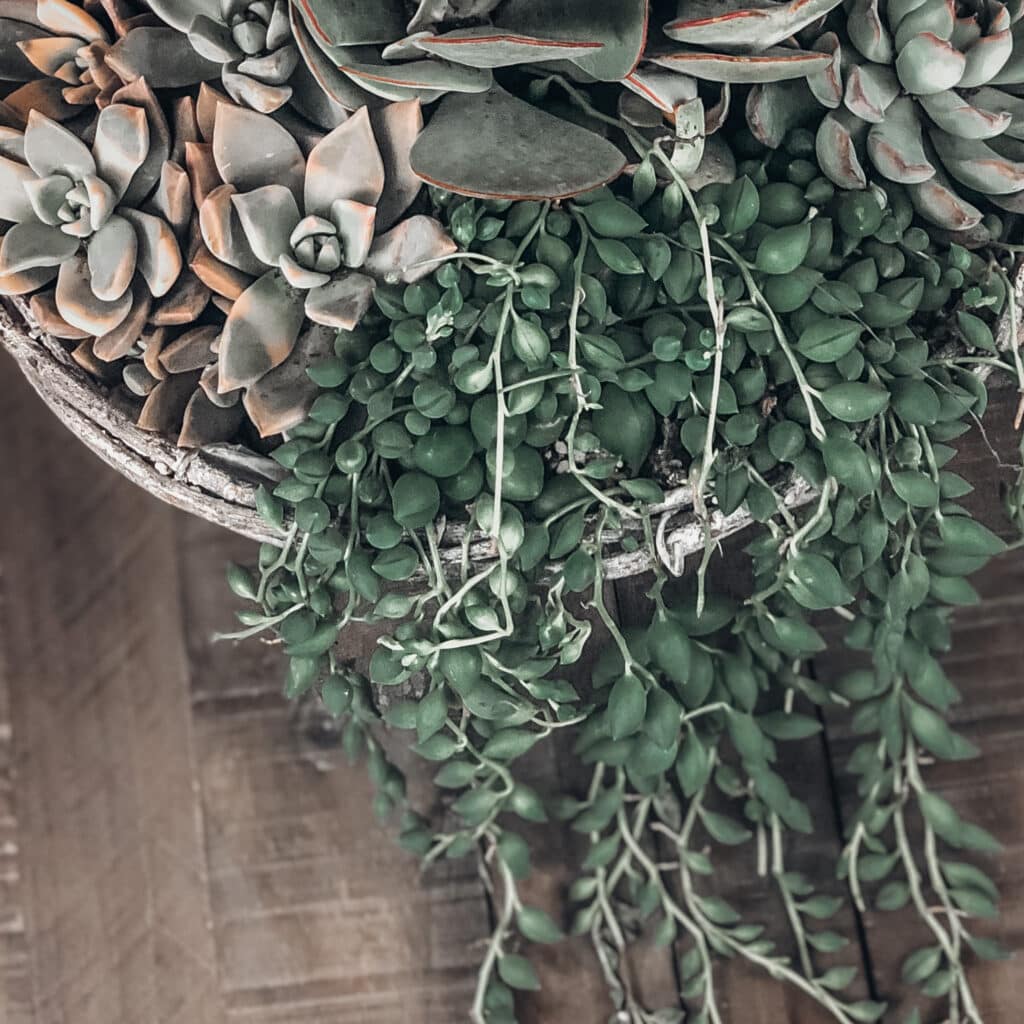
Water Indoor Succulents Sparingly
Your indoor succulents won’t need very much water because they’ll likely be growing in low-light conditions and will be protected from intense heat and direct sunlight.
This means the soil will take longer to dry out, especially if the pot or planter does not have a drainage hole.
The best way to water your indoor succulents is to let the soil dry out completely between waterings.
While outdoor succulents need more frequent watering, especially full sun succulents, your indoor succulents will need to be watered less often.
The type of soil you use also comes into play. TIP: It’s very important to use well-draining soil when growing succulents indoors, as this type of soil does not retain excess moisture.
Succulents famously hate soggy soil because their roots can easily rot if left without good drainage. Therefore, it’s our job to plant them in the appropriate medium.
Always keep in mind that the fleshy leaves of succulents store all the water they need to make it through an extended drought.
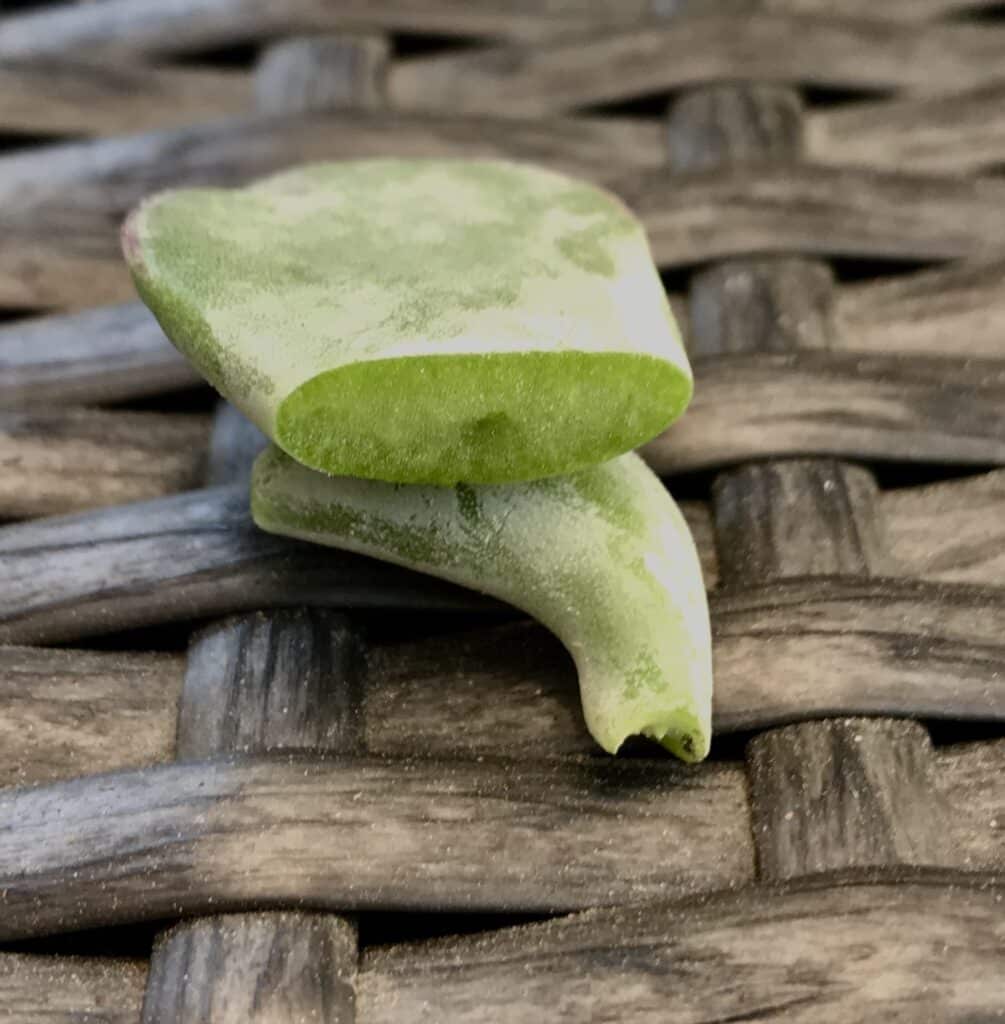
Since your indoor succulents will be grown in partial shade and indirect sunlight, their soil will take a while to dry out again, usually at least a week.
If you struggle with either over-watering or under-watering your plants, then you might want to create a watering schedule for yourself!
Keep it simple: pick one day out of the week to feel the soil in your pots for moisture.
If you touch the soil and it still feels moist, then wait a few more days before watering again. If the soil feels dry, break out your watering can and water your plants!
Put the day on your weekly calendar with a reminder so you never miss a week!
For a more thorough walk-through on watering succulents, head to my post about How to Water Succulents the Right Way.
Provide as Much Sunlight As Possible
Indoor succulents need sunlight to thrive: they’ll look prettier the more light they get.
This is especially true during their growing season. If you can’t provide enough light, you might end up with leggy, stretched-out succulents.
The indoor succulent plants on this list do well in bright indirect light, especially during the spring and summer, when the days are longer.
Indoor conditions during late fall and winter can be tricky, however, so do your best by placing your succulents near a sunny window.
Also remember that while some succulents perform better in the partial sun than others, all succulents are sun-loving plants. The more sunshine your indoor succulents get, the healthier they’ll be!
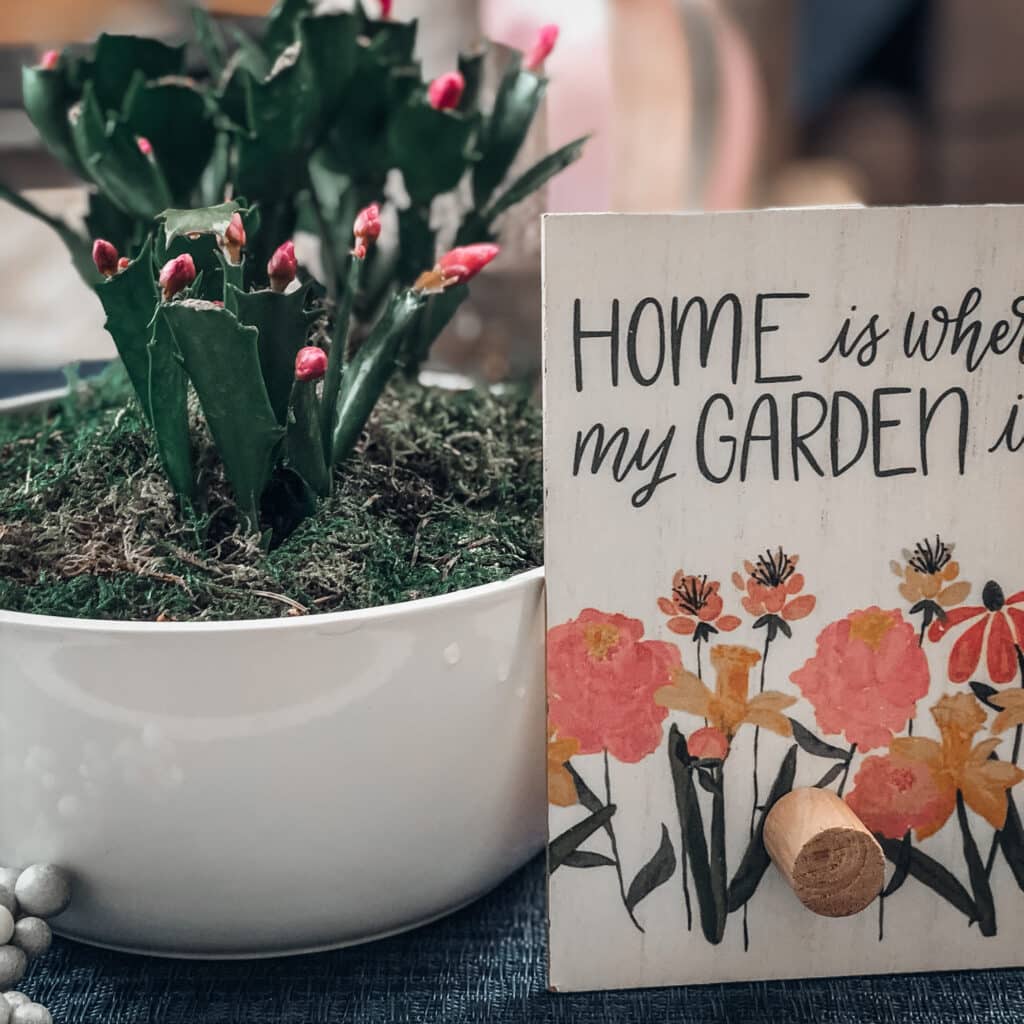
This isn’t very hard to achieve in most homes. Filtered sunlight that comes through a window or glass door is the perfect amount of light for the succulents on this list.
Be mindful that placing your indoor succulents too far away from a light source is not a good idea. (You might consider a pothos plant, instead).
Your succulent will lose its color and vibrancy, will eventually lose its shape and grow leggy, and will also fail to grow (unless, of course, we’re talking about the snake plant, but more on that later!).
If you’re struggling to find enough light in your home, then the use of a grow light can be very beneficial!
TIP: Make sure to place the grow light several inches away from your indoor succulents, so as not to burn them. Also, refer to any special directions on the specific grow light you purchase.
Personally, I’ve found that my succulents live happily in my living room, dining area, and bathrooms, so I haven’t needed the help of a grow light. (I live in Zone 9B where most days are sunny).
All of these rooms have windows that let in light. My current succulents sit several feet away from a window, from about 5-10 feet.
(I don’t usually keep any succulents in my kitchen because they wouldn’t get enough sunlight there.)
And now that we’ve covered the basics of water and sunlight, it’s finally time to talk about the best succulents for growing indoors!
The Best Succulents for Indoors
1. Zebra Haworthia
Zebra plant is probably the easiest succulent to grow indoors. I recommend it to every beginner.
It loves living indoors and can actually sunburn quickly when left to fend for itself outdoors in full sun.
Zebra Haworthia is perfect for indoor spaces because it can act as an interesting decor piece, especially in modern homes. Just take a look at how beautiful it is with its white stripes and spiky stems!
Plant it in a pot you love and keep it on a bookshelf, end table, or dining table…the possibilities are endless. It’s a slow-grower so no need for a large pot.
To help it thrive in your home, let the soil dry out completely between waterings. Also, try to give it as much bright indirect light as possible to keep its dark-green leaves looking their best.
If you’re new to succulents, start with a haworthia plant. And if you need a great housewarming gift idea, haworthia is an excellent choice!
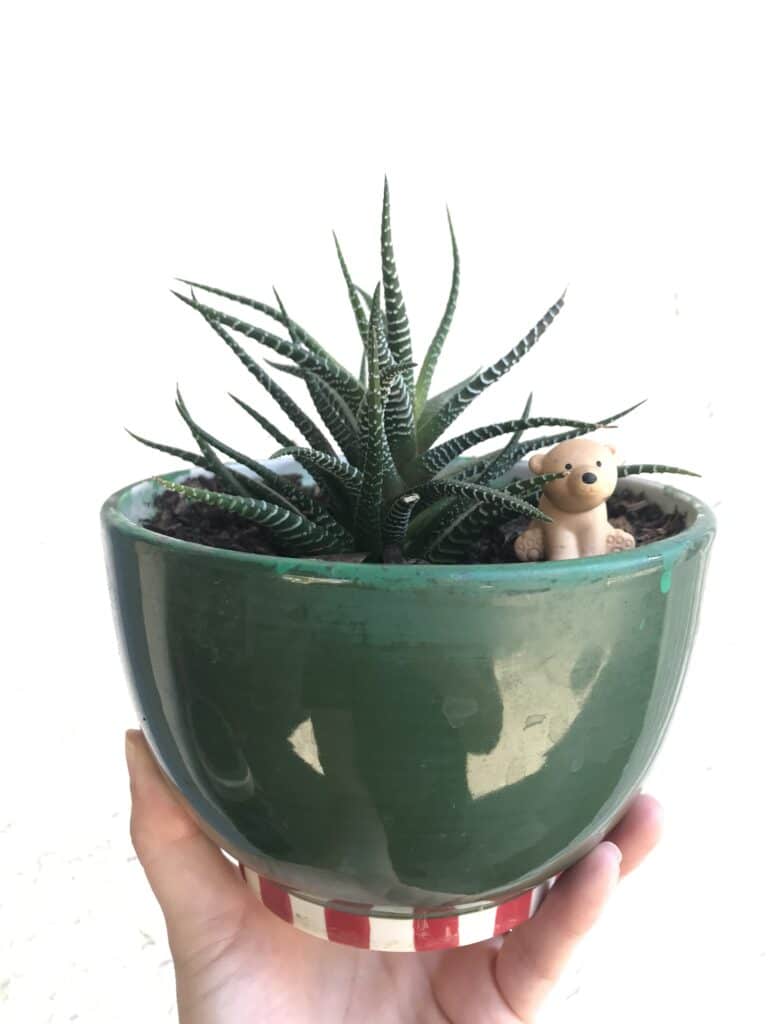
2. Snake Plant (Sansevieria trifasciata)
The snake plant, also called Mother-in-Law’s Tongue, is another low-maintenance plant that thrives in dry conditions.
It can survive weeks, even months without water all while looking beautiful.
It’s the most resilient houseplant I’ve ever owned!
Like the zebra haworthia succulent, the snake plant can serve as a modern decor piece thanks to its thick, pointy stems that grow upwards, sometimes reaching several feet tall.
It can multiply easily, too. It often produces shoots within its pot that can be dug out and planted as a new plant.
Snake plants appreciate bright light, but they can still perform pretty well in low-light rooms (just don’t expect it to grow tall without much light).
They’re easy to find in a variety of sizes, too. Choose a size you’re comfortable with and one that will suit the space in your home.
For more information about growing this popular succulent, this post on How to Care for a Snake Plant has lots of useful tips!
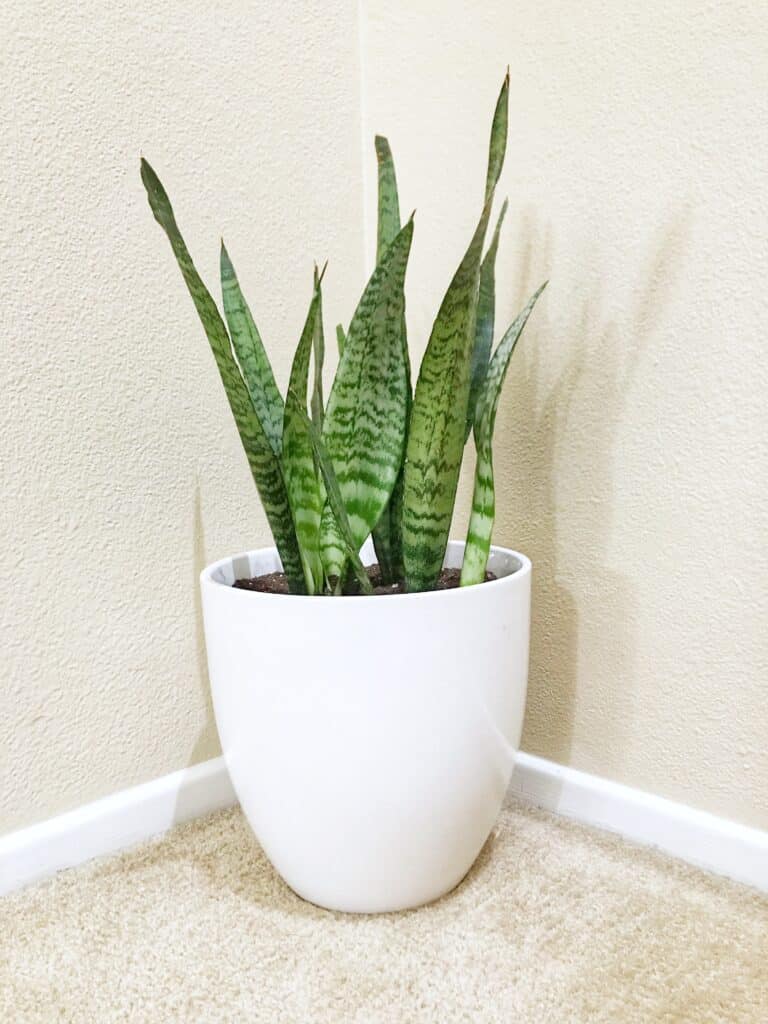
3. ZZ Plant
This is another indoor succulent that makes a gorgeous houseplant and housewarming gift. It’s among the easiest plants to care for and it’s also among the most elegant!
It features waxy oval-shaped leaves and a very deep-green shade.
If you’re new to houseplants, give a ZZ plant a try. I’ve loved mine for years!
It’s incredibly resistant to drought and can survive some serious neglect, too. It features glossy green leaves that grow out of its rhizomes, so it easily brings new life and greenery indoors.
If you’re interested in the specifics of this plant, head to my post on How to Care for a ZZ Plant.
And if you’re looking to use your ZZ plant as a decor piece in your home, try pairing it with a bright white pot – the contrast makes the deep green leaves stand out.
Or you can try a silver pot like I did! I think the colors pair nicely.
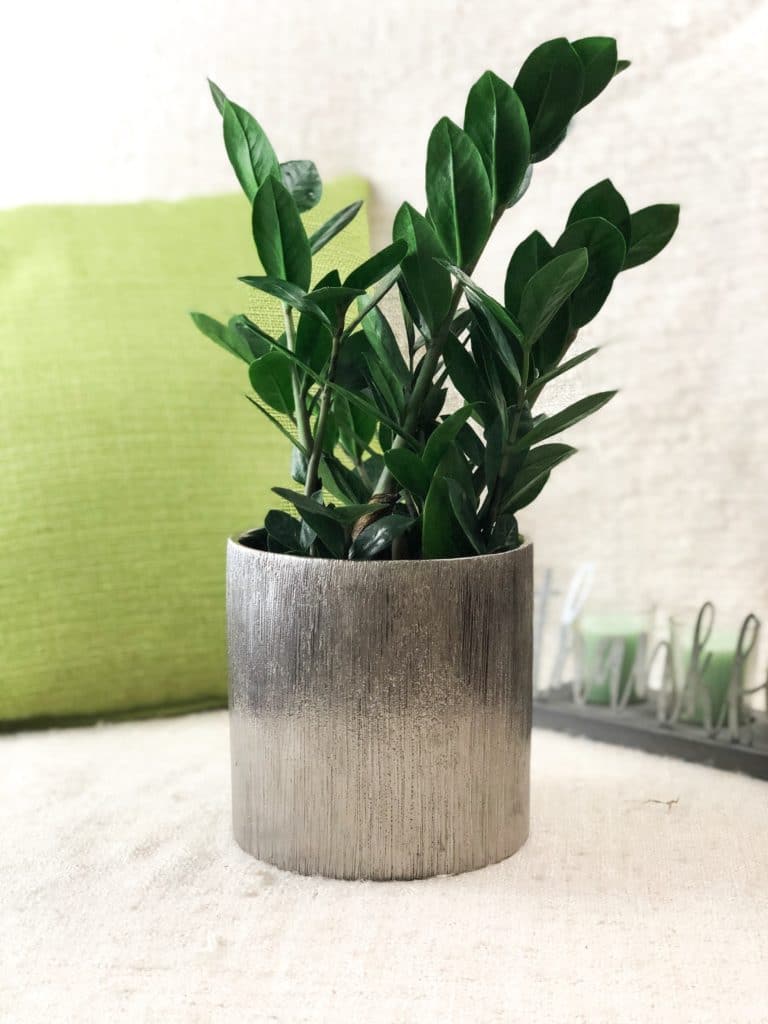
4. Jade Plant (Crassula Ovata)
The jade plant is a true garden gem. This South African native can thrive both outdoors and indoors and it’s among the easiest plants to grow.
If you’re new to growing succulents, jade plants should be at the top of your list. There are plenty of varieties to choose from, too, so check them all out before making your final choice.
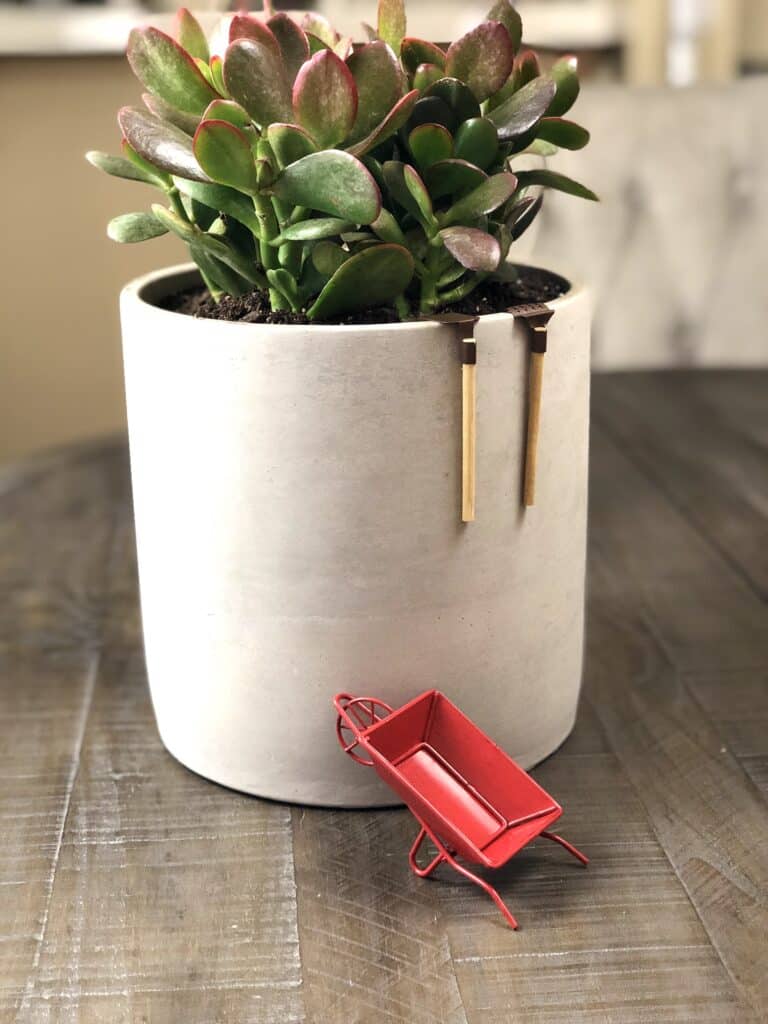
Choose a look you love! You can find jade plants in many different sizes – it’s one of the most widely available succulents.
I see them offered in garden centers from tiny two-inch containers to very large pots that are great for planting outdoors.
One thing people love about the jade plant is that as it ages, it can start to resemble a beautiful bonsais tree. See the photo below of an aged jade plant.
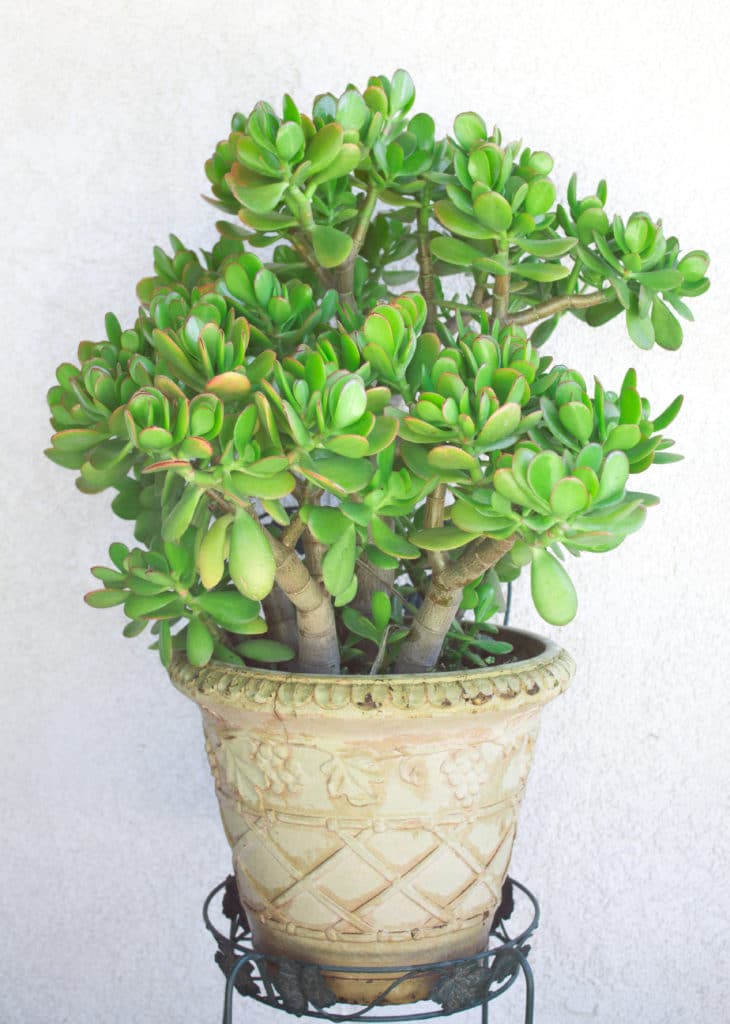
It grows several feet when kept outdoors but when grown as a houseplant, it’ll grow to about a foot tall with time.
If you want to get comfortable with caring for jade crassula succulents, head on over to my post about How to Care for a Jade Plant. I not only give easy tips to follow but show you some beautiful pictures of my jade plants, too!
5. Panda Plant (senecio rowleyanus)
If you’re intrigued by fuzzy succulents, then the panda plant is a good choice.
This native of Madagascar is so beautiful – it stands out in a sea of other gorgeous succulents. It features fuzzy-soft, gray-green leaves with dark brown tips.
Luckily for us, it’s also a tough plant that thrives on little water. This slow-growing succulent won’t get too tall as a houseplant but it can reach one to two feet with time and bright light.
I think it’s one of the most beautiful plants you can own. Plant it alone in a small white pot to give it the spotlight! It enjoys light but can also grow in low-light conditions.
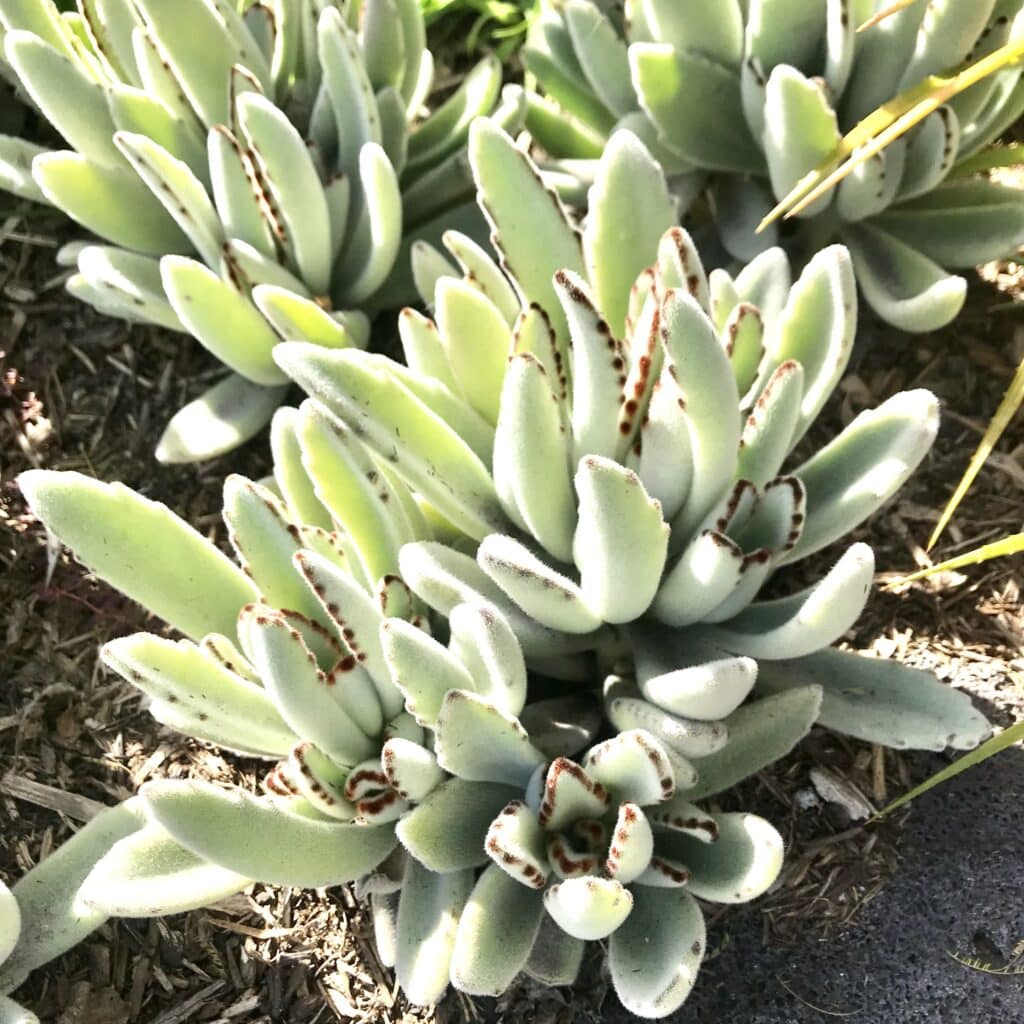
6. String of Pearls
String succulents love growing indoors. They love bright light, too, though, so try to keep it close to a sunny window. For best results, give string of pearls enough light and don’t overwater!
I love growing string succulents inside my house because they do so well in filtered light AND because they can burn rather easily if left outside, especially in the summer.
String of Pearls also blooms during late winter, but it needs a ton of light exposure to do so. Otherwise, just enjoy its gorgeous pearl-shaped beads!
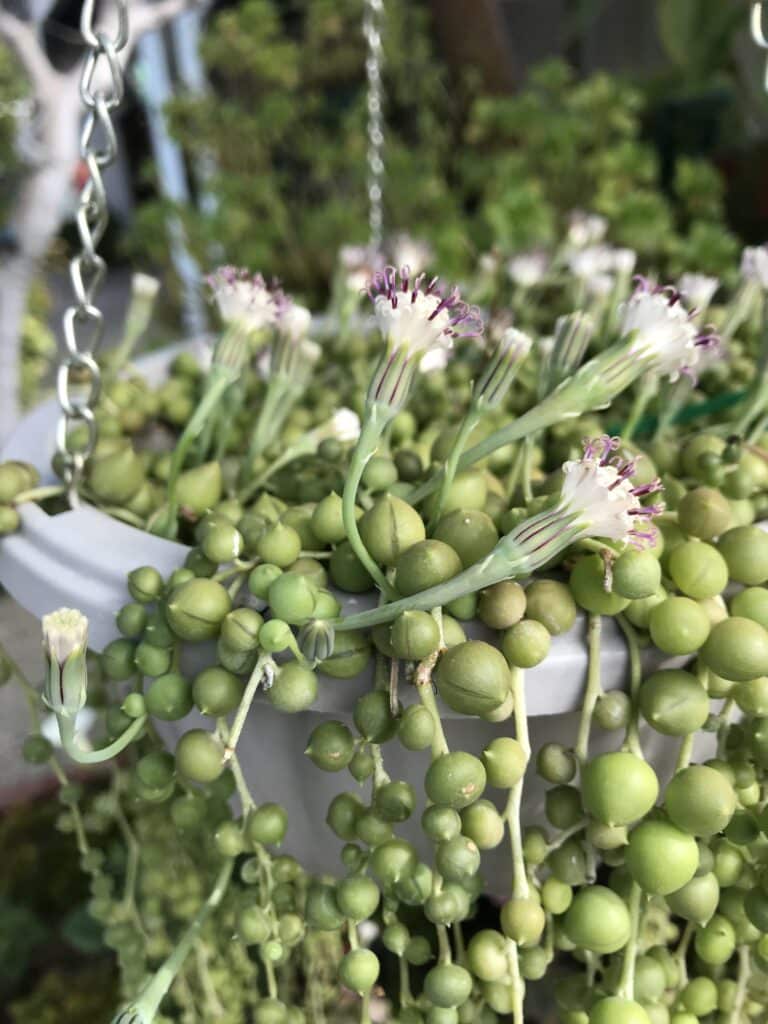
7. Christmas Cactus, Thanksgiving Cactus, Easter Cactus (Holiday Cacti)
The Christmas Cactus plant pops up in garden centers and grocery stores around the holiday season. It makes a stunning house plant because of its interesting stems and beautiful flower blooms.
Christmas cactus has rounded leaves aka segmented stems, unlike Thanksgiving Cactus, which features more spiky leaves. You definitely won’t have to worry about pricking your hands with this cactus!
There’s also a third cactus type that can be confused with Christmas Cactus, and it’s called Easter Cactus. Easter Cactus is sold during the spring season.
All of the above are often referred to collectiely as Holiday Cactus. They require the same basic care needs but they all bloom at different times, hence their names!
Christmas Cactus is rather low-maintenance but it might take a little work to make it bloom the following year.
As far as watering goes, water it when the top of the soil feels dry about an inch deep into the pot. Unlike other indoor succulents, Christmas Cactus appreciates being grown with more moisture in its soil between waterings.
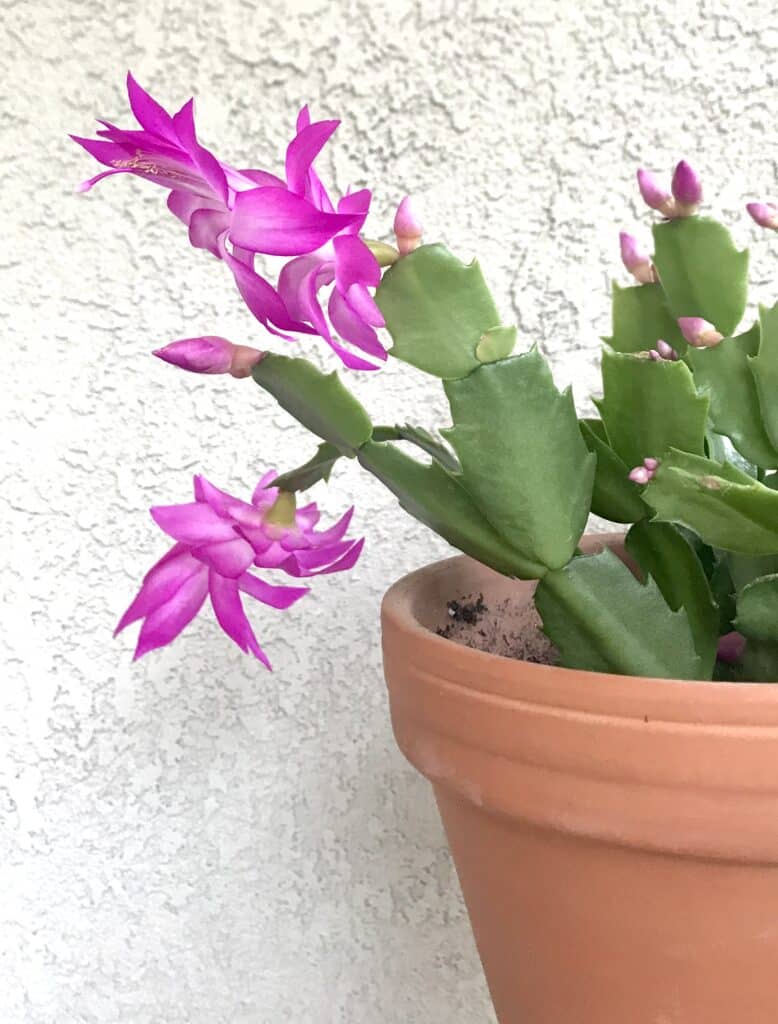
The most common type grows red flowers but it can also be found with pink flowers and white flowers. If you’re interested in learning more, head to my post about How to Care for Christmas Cactus!
8. Burro’s Tail (Sedum morganianum)
Burro’s Tail features a unique appearance and lovely lime color. It can sunburn easily when exposed to high temperatures and direct sunlight, which makes it an ideal indoor succulent.
Its leaves can drop easily when touched or when overwatered, so take caution. Let the soil dry out completely between waterings for best results.
Burro’s tail looks beautiful planted alone or with other succulents in an arrangement.
9. String of Bananas
This is another popular string succulent that’s also easy to grow. It can be sensitive to full sun, which makes it a great indoor plant.
Place it near a sunny post in your home because it does need a good amount of light to thrive.
I give a few simple tips on keeping this string succulent healthy with my post on How to Care for String of Bananas plant. Check it out if you’re interested in growing it!
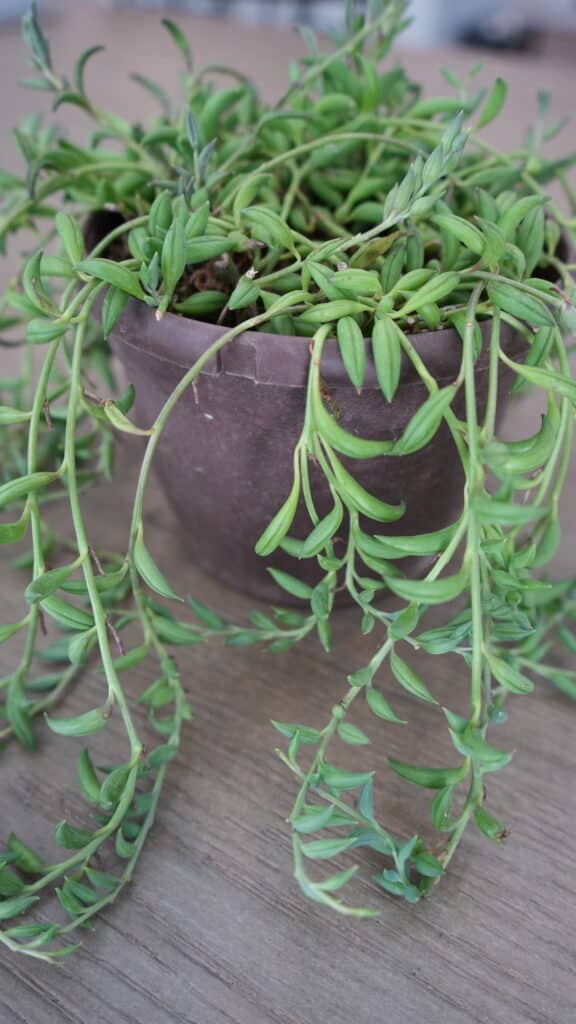
10. Gasteria
Gasteria is another incredibly low-maintenance succulent that does well indoors.
It has an interesting look and a modern vibe. Its leaves are thick and resemble tongues.
You don’t have to water gasteria often; only water it when the soil in the pot is completely dry from top to bottom.
This succulent is one of the few that can actually thrive in low light and still retain its shape and color, which makes it the perfect houseplant.
Many succulents have very thin roots, but gasteria has thick roots, so its best to plant it in a larger pot with plenty of soil.
11. Tiger Jaws (Faucaria Tigrina)
If you’re looking for a unique houseplant, Tiger Jaws is it! It features thick, triangular leaves with soft spikes that line the leaves.
It’s great for people who love cacti but don’t want to deal with having to prick their fingers when they handle them!
This is a tough succulent that is very drought-tolerant, so be sure to let its soil dry out completely between waterings.
Plant it alone in a small white pot for a great color contrast or include it in a beautiful succulent arrangement where it can play off other plants.
Tiger Jaws does great outdoors, too, so if you ever want to move it out into your yard, you can!
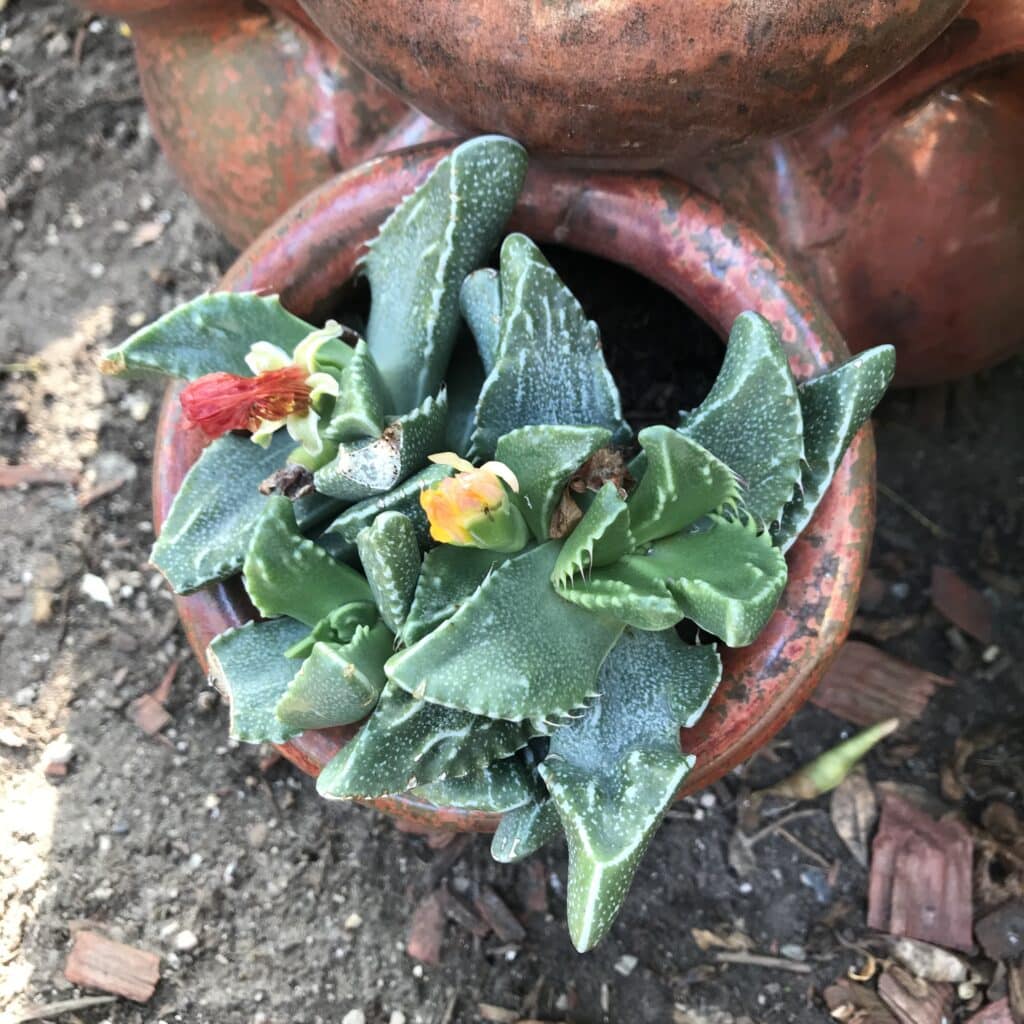
12. Elephant Bush (Portulacaria afra)
This is one of my favorite succulents for BOTH indoors and outdoors because of how resilient it is. My favorite is the variegated kind because of the mix of light green and cream.
It’s gorgeous!
I can go a very long time without water and it pairs beautifully with other succulents in an arrangement.
For indoors, however, I think it can stand alone in a small white pot. Planting in white will give it the chance to stand out in your home.
Try not to water too frequently; let the water dry out between waterings. Variegated elephant bush can grow tall and wild, so I recommend you buy a small container, 2 or 4 inches is ideal for indoors!
As time goes on, it’ll grow taller but not as tall as it would if it was kept outdoors in full sun.
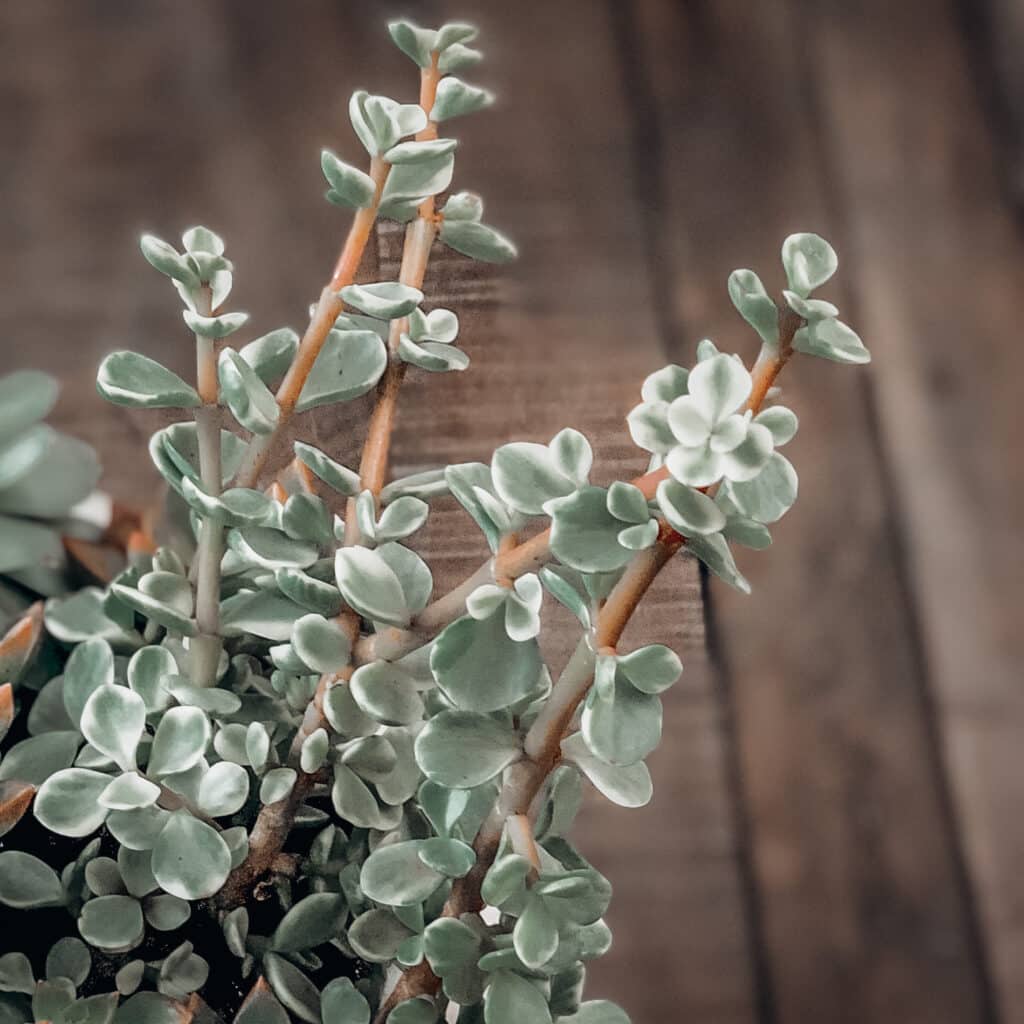
That tops my list of the best succulent plants for indoors. I hope it’s inspired you to grow more succulents indoors and fill your home with more low-maintenance and drought-tolerant plants!
Best of luck and happy gardening!
WANT TO LEARN MORE ABOUT SUCCULENT CARE?
Check out the posts below for more information on growing healthy succulents!
DIY Side Yard Ideas for Transforming a Small Space
How to Water Succulents in Pots Without Drainage
Best Succulent for Full Sun
How to Save an Overwatered Succulent
DIY Succulent Arrangements: Fun and Easy Ideas for Your Home
How to Water Succulents – the Right Way
Do Succulents Die After Flowering?
How to Make Your Own Succulent Soil
How to Care for Hens and Chicks Succulents
Succulent Leaves Falling Off When Touched: Top Causes and Solutions
Growing String of Bananas: Plant Care Guide
What’s Wrong with My Succulents? Common Problems and Solutions